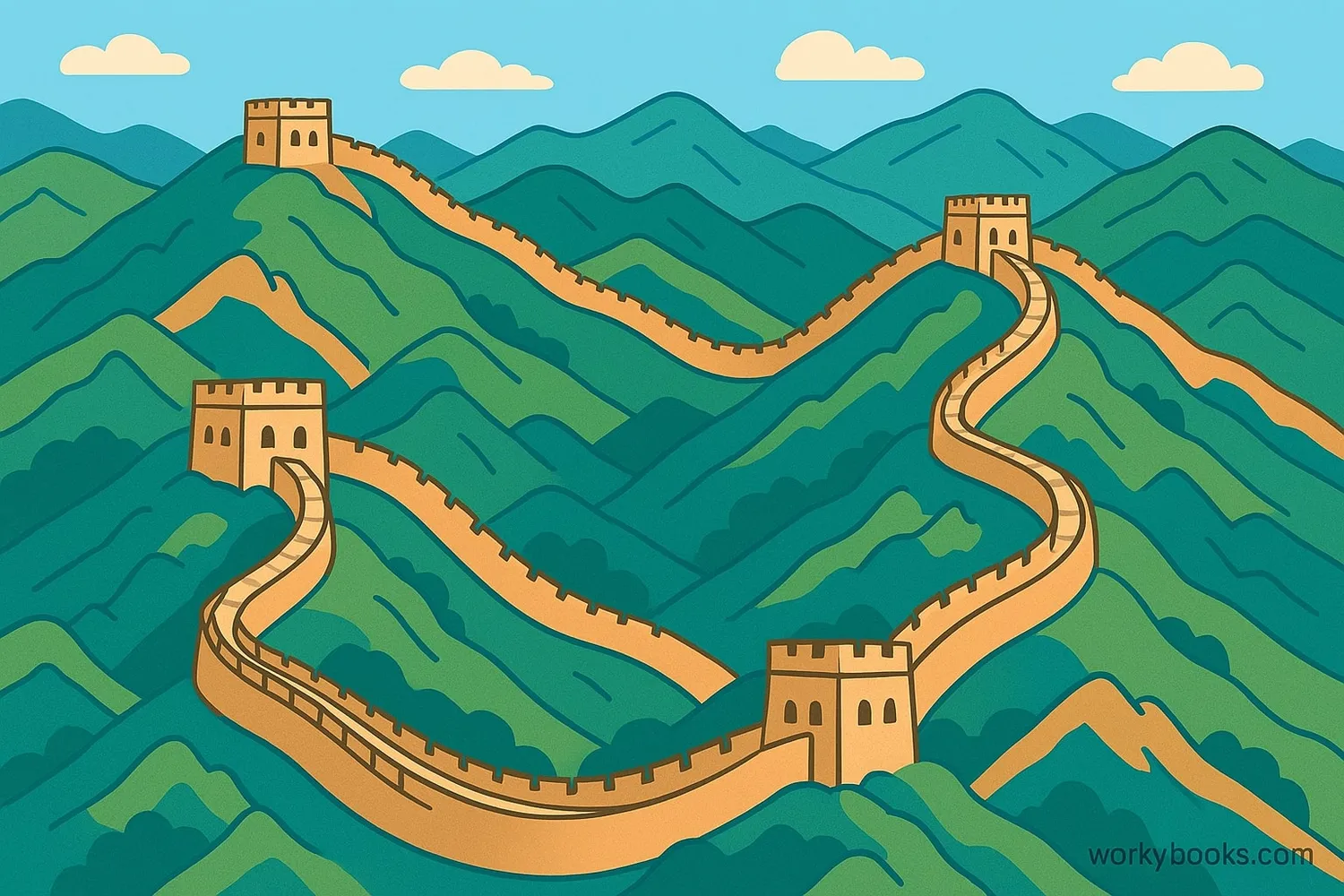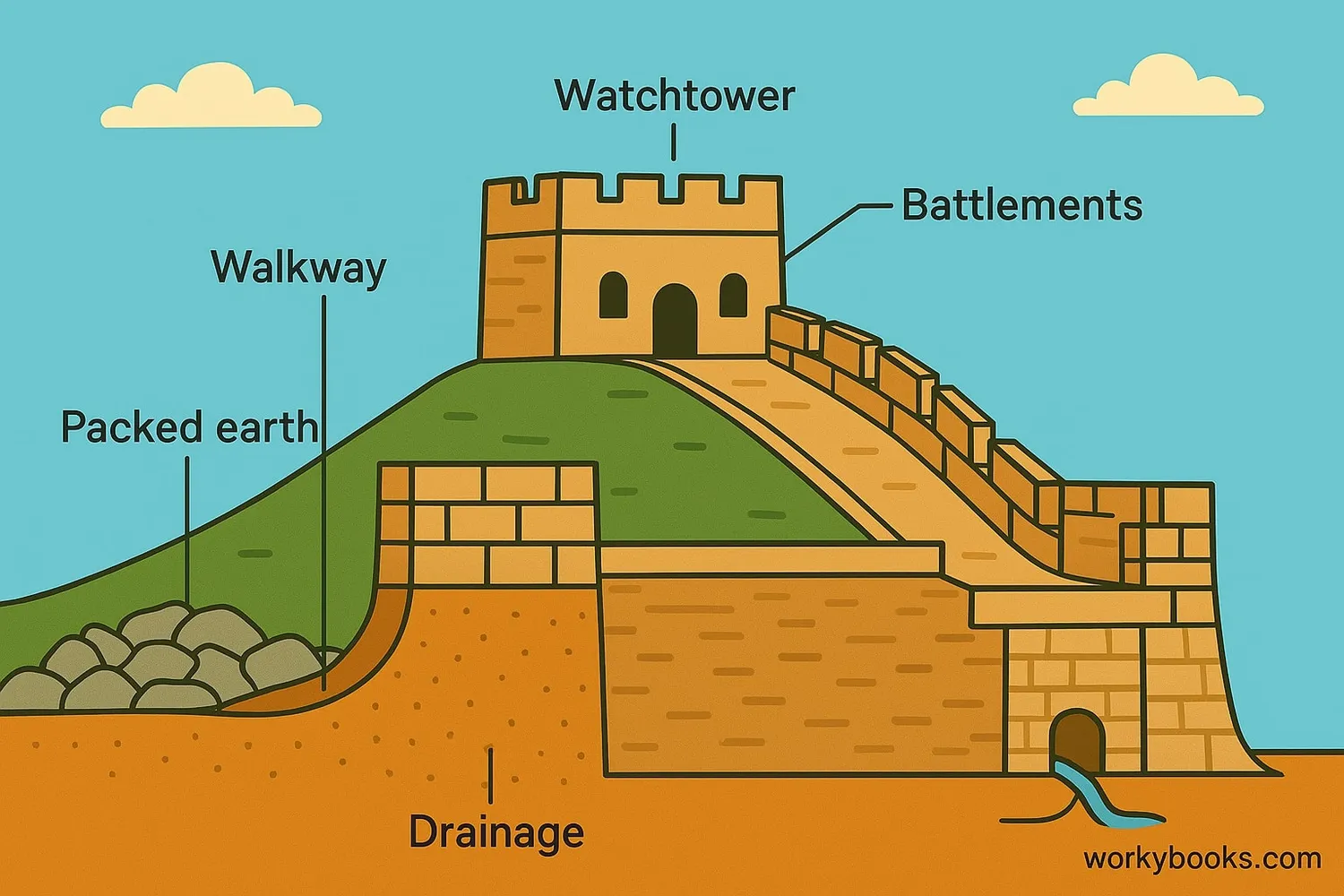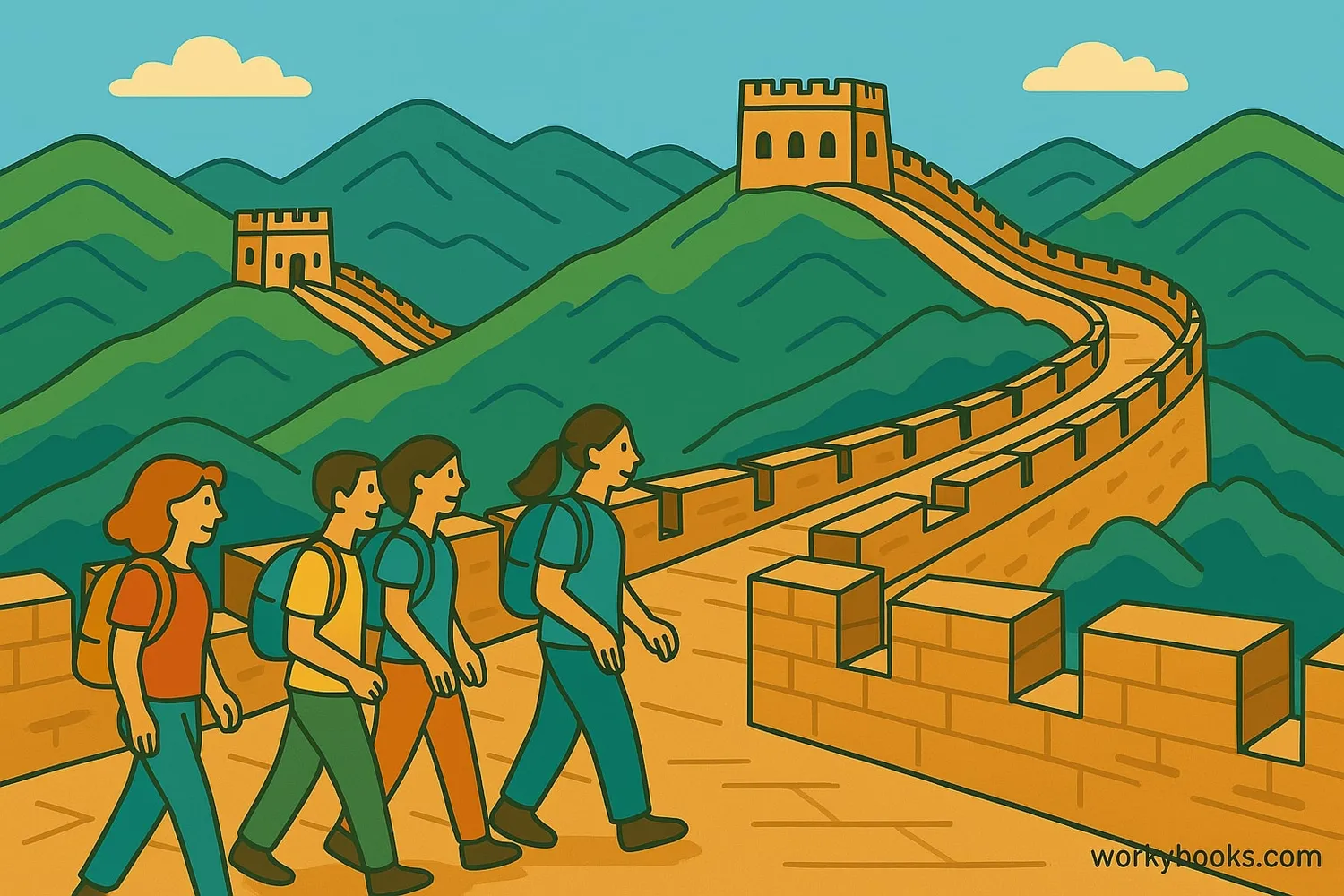The Great Wall of China - Definition, Examples, Quiz, FAQ, Trivia
Discover the world's longest wall and its fascinating history!
What is the Great Wall of China?

The Great Wall of China is an ancient series of walls and fortifications stretching across northern China. It's the longest wall in the world, extending over 13,000 miles (21,000 km)! Built over many centuries, its purpose was to protect Chinese states and empires from invasions.
Think of the Great Wall as a giant protective ribbon across China's landscape! It winds through mountains, deserts, grasslands, and plateaus. While it's famous as a single wall, it's actually many walls built during different dynasties that were later connected.
Did You Know?
The Great Wall is so long that it would stretch from New York City to Los Angeles more than four times!
History of the Great Wall

The Great Wall wasn't built all at once - it took over 2,000 years to complete! Here's a brief history:
Century BC
First walls built by smaller states during the Spring and Autumn period
Century BC
Qin Dynasty connects existing walls after unifying China
Century AD
Ming Dynasty builds the most famous and well-preserved sections
The most famous sections were built during the Ming Dynasty (1368-1644). This is when the wall took its current form with bricks and stone. Millions of workers including soldiers, peasants, and prisoners contributed to its construction over the centuries.
Workers & Materials
Builders used local materials like earth, wood, stones, and bricks. Some sections contain sticky rice in the mortar to make it stronger!
Construction & Design

The Great Wall wasn't just a simple wall - it was a sophisticated defense system with many features:
Walls
Height: 15-30 feet (5-9 m) | Width: 15-25 feet (5-8 m)
Watchtowers
Positioned every 300-500 feet (90-150 m) for observation
Beacon Towers
Used smoke signals to warn of attacks from great distances
The wall varied in construction based on local materials:
• Mountain areas: Stone blocks
• Plains: Rammed earth
• Deserts: Twigs and reeds layered with sand
The top of the wall was wide enough for soldiers to march in formation and for horses to pull carts. Crenellated parapets provided protection during battles.
Significance & Tourism

The Great Wall is one of the world's most significant historical structures:
UNESCO Site
Designated a World Heritage site in 1987
Cultural Symbol
Represents Chinese civilization and ingenuity
Tourism
10+ million visitors annually to popular sections
Popular sections to visit:
• Badaling - Closest to Beijing, most visited
• Mutianyu - Beautiful scenery, less crowded
• Jinshanling - Great for hiking, partially restored
• Simatai - Steeper sections, dramatic views
Today, only about 10% of the Great Wall remains in good condition. Conservation efforts are ongoing to preserve this incredible monument for future generations.
Great Wall Quiz
Test your knowledge with this Great Wall of China quiz!
Frequently Asked Questions
Here are answers to common questions about the Great Wall:
Great Wall Trivia
Discover amazing facts about the Great Wall!
Monumental Length
If you walked the entire length of the Great Wall, it would take approximately 18 months of non-stop walking!
Sticky Solution
Some sections used sticky rice in the mortar! The amylopectin in the rice created an incredibly strong and durable building material.
Space Myth
The idea that the Great Wall is visible from space began before space travel. It was mentioned in a 1754 letter and later became a popular myth.
Nickname Origins
The Chinese name for the Great Wall is "Chángchéng" which means "Long City" or "Long Wall." It wasn't called "Great Wall" until Western visitors gave it that name.


